Essential Guide to How to optimize your System
Initial settings:
1. Type DSETTINGS at the command prompt:
- Polar Tracking Tab: enable polar tracking (or press F10).
- Dynamic Input Tab: disable pointer input, enable dimension input where possible, click show only one dimension.
- Quick Properties Tab: disable quick properties palette.
- Selection Cycling Tab: disable selection cycling.
2. Type 3DCONFIG at the command prompt:
- enable adaptive degradation.
- Click manual tune and enable hardware acceleration.
3. Pull down menus, go to: Tools/Customize/Edit Program Parameters (ACAD.pgp) – for those of you that edit command abbreviations.
(C:\Program Files\Autodesk\AutoCAD 2015\UserDataCache\en-us\Support)
Initial commands to speed up performance
Type the following in the command prompt:
- UCSDETECT (set to 0) – this will disable Dynamic UCS
- QPMODE (set to 0) – disables Quick Properties Palette for items selected in the drawing
- DRAWORDERCTL (set to 0) – speeds up regeneration when switching tilemodes and when regenerating in model space
- HPDLGMODE (set to 1) – displays hatch/gradient box for items selected in drawing
- HPQUICKPREVIEW (set to 0) – disables hatch preview
- VTENABLE (set to 0) – disables smooth view transitions when zooming in/out (makes zooming instantaneous)
- LAYERDLGMODE (set to 0) – speeds up loading of layers palette
- MBUTTONPAN (set to 0) – middle button brings up snap menu, (set to 1) – middle button is PAN command
- ROLLOVERTIPS (set to 0) – disables rollover tips
- SELECTIONPREVIEW (set to 0) – disables selection previewing
- SELECTIONCYCLING (set to 0) – turns selection cycling/overlapping off
- PICKADD (set to 1) – enables subsequent selections when modifying properties
- AUTOCOMPLETE – set to OFF
- LOCKUI (set to 0) – unlocks toolbars and windows (Note: when toolbars are locked, performance is better. Only use this command if you use the layers palette window in lieu of the layers toolbar.
- AUTOSNAP (set to 16) – Restricts F8 (ortho) from disabling F10 (polarmode)
The Graphics Card
The single most important factor in tweaking your system is the Graphics system, specifically the graphics card and driver. They (card and driver) are two different, but related, things
and one is just as important as the other. Ensure you have a graphics driver that is certified and supported by Autodesk.
- Check if there are updates / service packs for Autocad.
- Check if there are update for you graphic card. (right click on your desktop)< br>
- Tweak the graphic card.
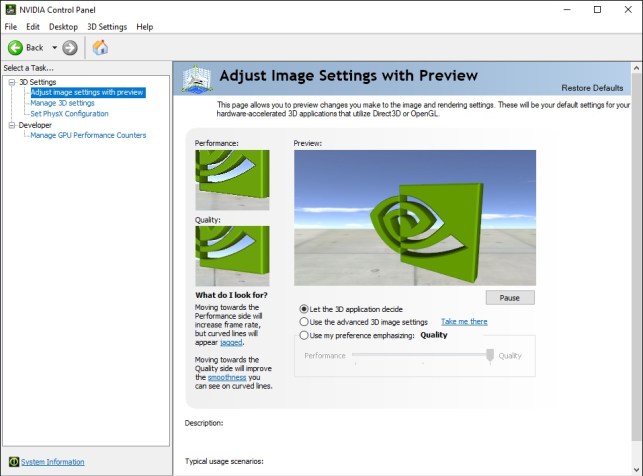
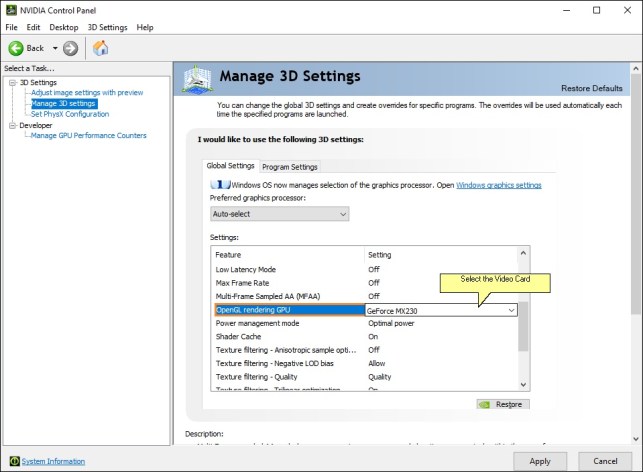
TrueType font in XREF slows down AutoCAD drawing performance
When a drawing containing a TrueType Font (TTF) is attached as an external reference (XREF) to a new blank drawing in AutoCAD, the file performance slows significantly. Issues include:
- Jumpy cursor
- Command lag
- Hanging/freezing
- Program crash
BLOCK_CHECK_START
Solution: TrueType font in XREF slows down AutoCAD drawing performance”>Substitute the TTF font with one of the fonts included with the program:
BLOCK_CHECK_END
Open the problematic xref file.
Enter the STYLE command.
Select the text style that has a TrueType font.
Change the font to one included with AutoCAD, such as an SHX or the @Arial Unicode MS.
Repeat for each text style that has a TrueType font.
Use the PURGE command select all options to clean the drawing.
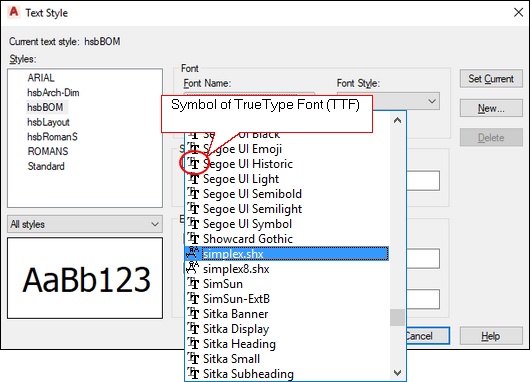
More helpful things you can do to optimize your drawing
Use the „freeze layers for disabled groups“ option in the hsb console.
- When you are drawing in 3D avoid using the Orbit with the 2D Conceptual View, better/faster to use the Wireframe View.
- Turn Freeze layers ON in the hsbcad Console
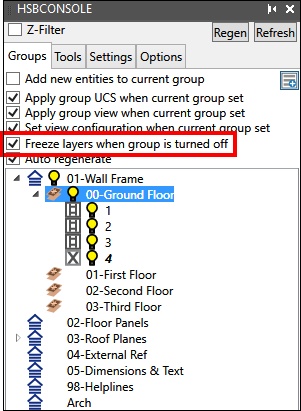
BLOCK_WARNING_START
This has a drastical impact on general drawing performance (as frozen objects won’t be considered during any calculation, view change, etc).
But on the other hand you have to be aware of the side effects: If the freezing is active, objects on frozen layers (invisible groups) will neither be selected nor calculated, then. (For example if you press Ctrl + A, you will only get the objects in visible groups)
BLOCK_WARNING_END
VERKILL
If you have a lot 2D linework in your drawing, the command OVERKILL is very helpful, as it can connect collinear line segments, purges overlapping lines, purges 0-length segments in polylines, and so on.
This reduces the amount of 2D linework objects in your drawing especially when you have to use imported stuff from another software, which often consists of a vast amount of small, individual line segments…
Delete not needed layouts in layout space.

Activate the hardware acceleration in the AutoCAD options
To get the best performance from your system, activate the hardware acceleration in the AutoCAD options, but disable all the minor options in that menu (advanced material effects, smooth line display , etc.)

Disactivate the view transitions for the ViewCube
(right click the ViewCube — Pick ViewCube Settings — Uncheck “Use view transitions when switching views”). This will disable the smooth animation from one view direction to another, which will result in a better performance at large models.
Disable the „Export in DXA“ option
If you don’t use the Hundegger BVN-Export from the CNC-Exporter, disable the „Export in DXA“ option in the hsbcad Settings — Hundegger tab This improves the performance when any operation uses or creates a modelmap…

Disable 3D object snap.
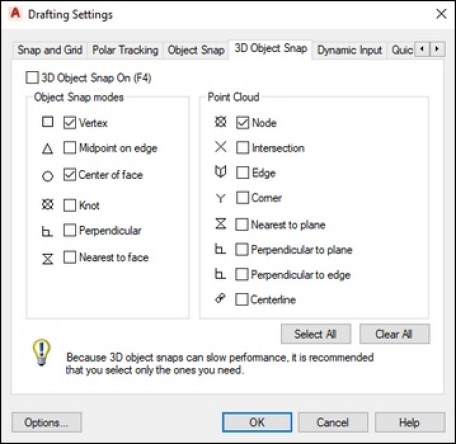
Disable hardly needed 2D object snaps
(especially the „apparent intersection is a performance killer in large 3d models).
Set the WHIPTHREAD System variable to value 3.
Controls whether to use an additional processor to improve the speed of operations such as ZOOM that redraw or regenerate the drawing.
WHIPTHREAD has no effect on single processor machines.
0: No multithreaded processing; restricts regeneration and redraw processing to a single processor. This setting restores the behavior of AutoCAD 2000 and previous releases.1: Regeneration multithreaded processing only; regeneration processing is distributed across two processors on a multiprocessor machine. 2: Redraw multithreaded processing only; redraw processing is distributed across two processors on a multiprocessor machine. 3: Regeneration and redraw multithreaded processing; regeneration and redraw processing is distributed across two processors on a multiprocessor machine.
For advanced users, especially when preparing drawing templates, I’d also recommend:
- purging not needed AutoCAD Architecture Styles in the style manager (same procedure as you already described for hsbcad TSLs)
- purging the display manager from top to bottom (configurations first, then display sets and finally displays for each object type
- After all this style and display purging, run the standard PURGE command and always run the AUDIT command as long as it finds bugs (can be required several times) before saving a template. These purging procedures often cause errors in the drawing database, which mustn’t be saved in the template. Otherwise you would have them in each drawing, based on that template…

